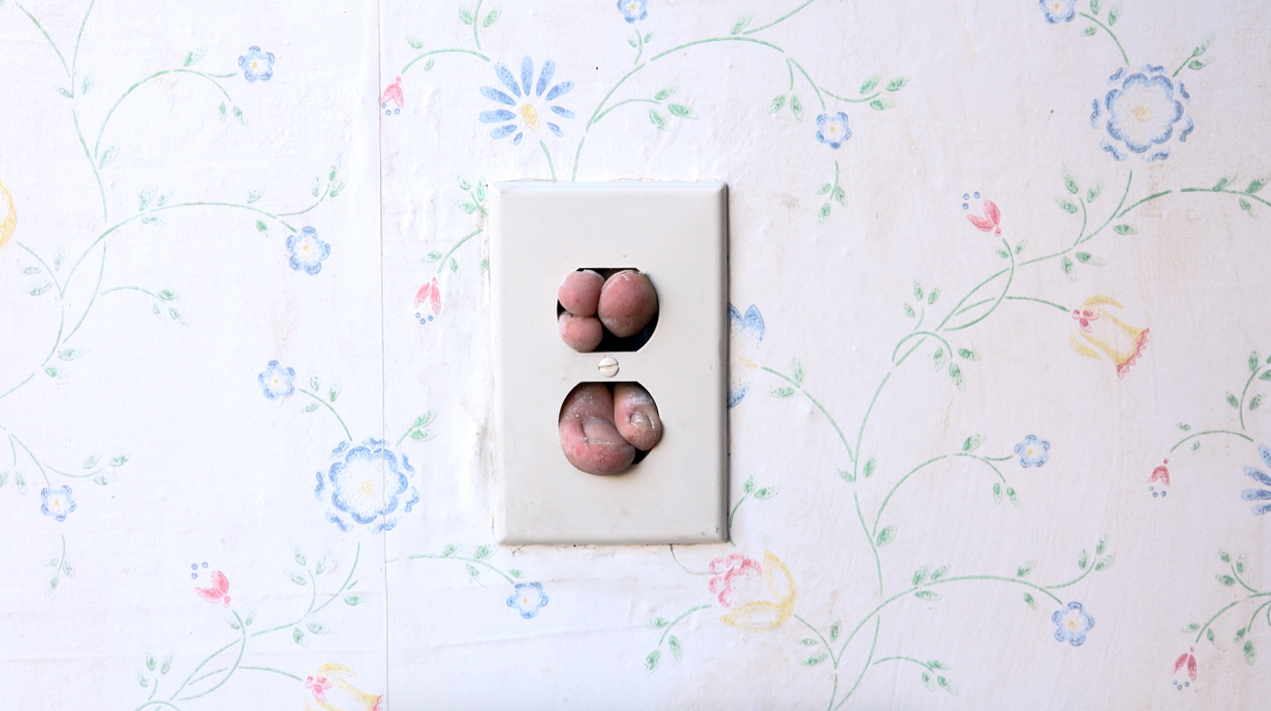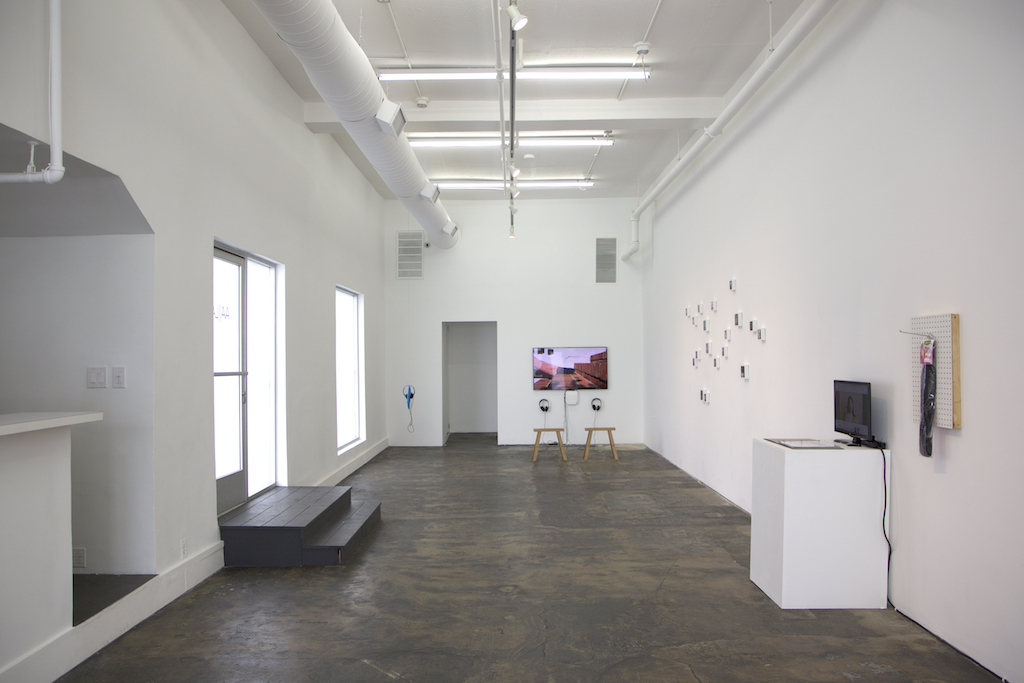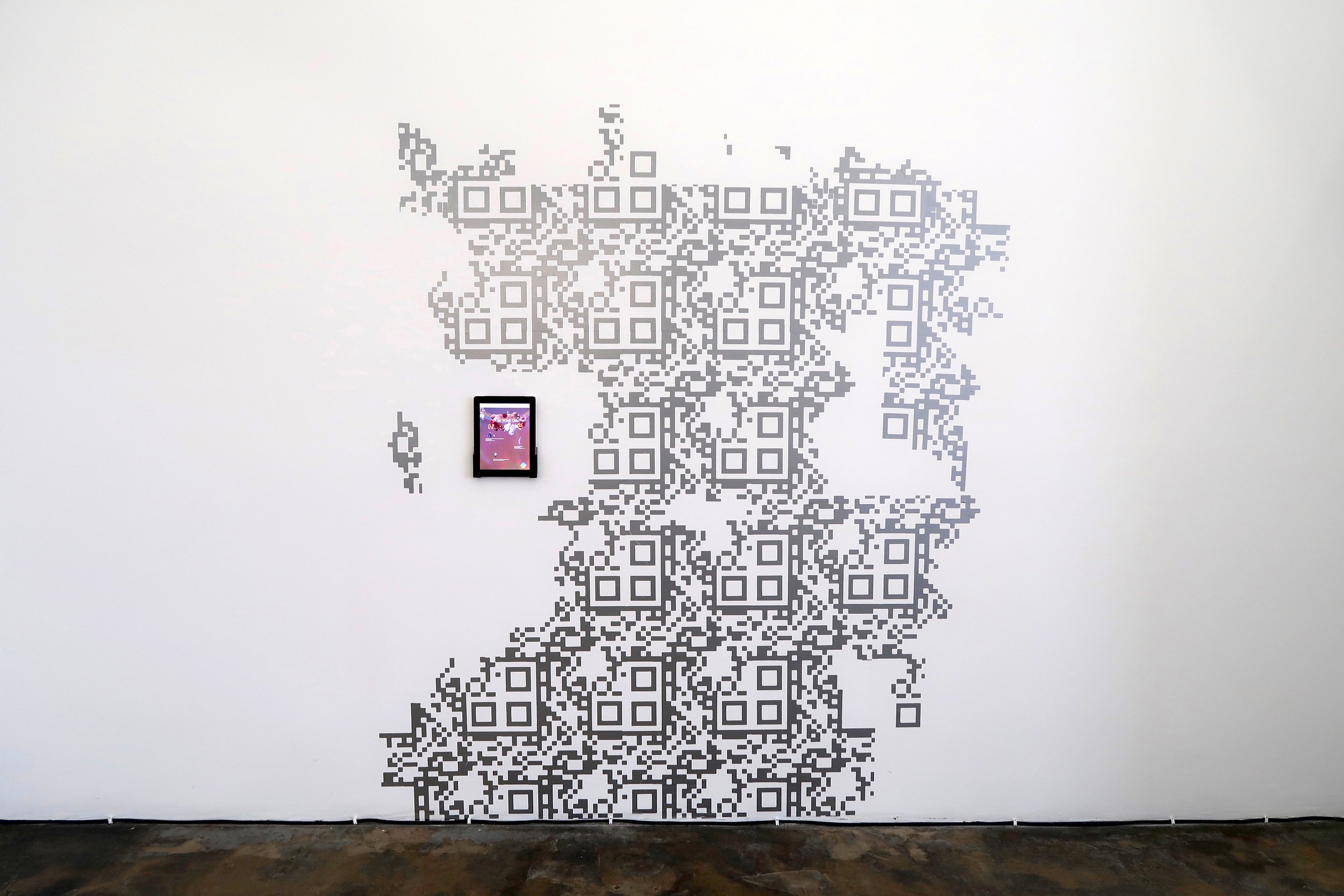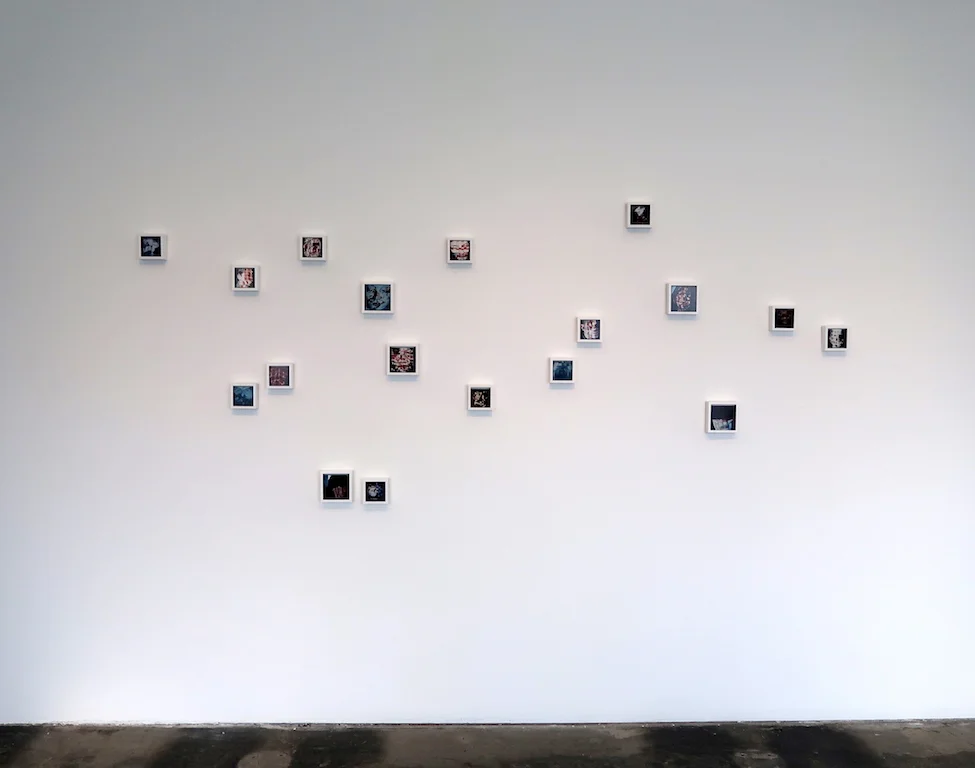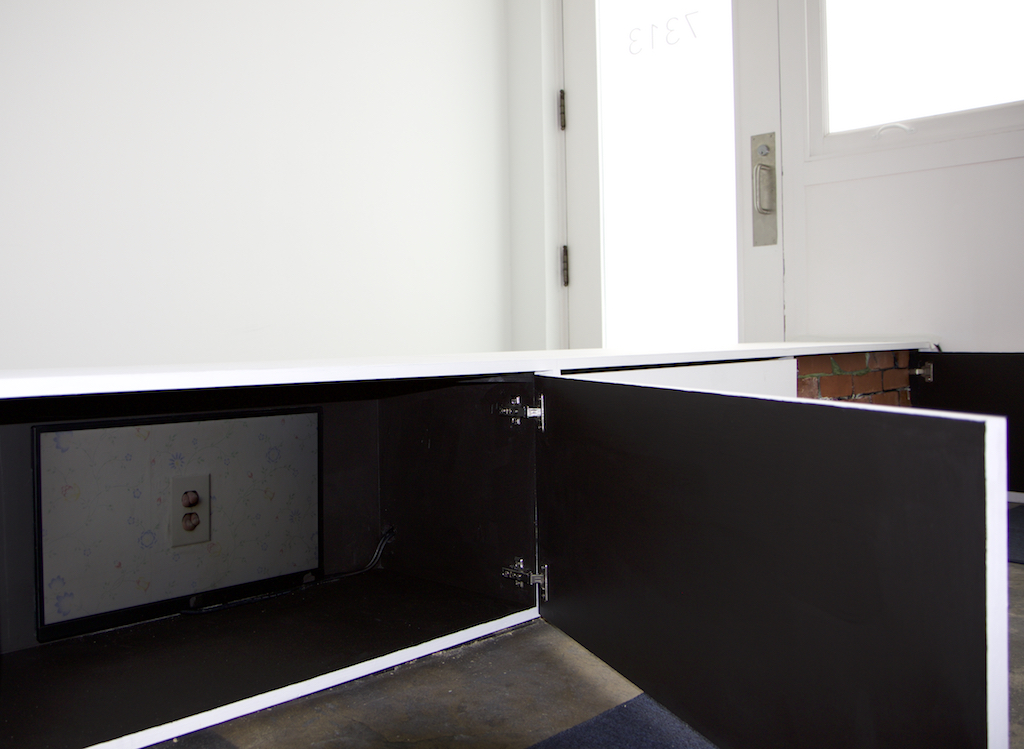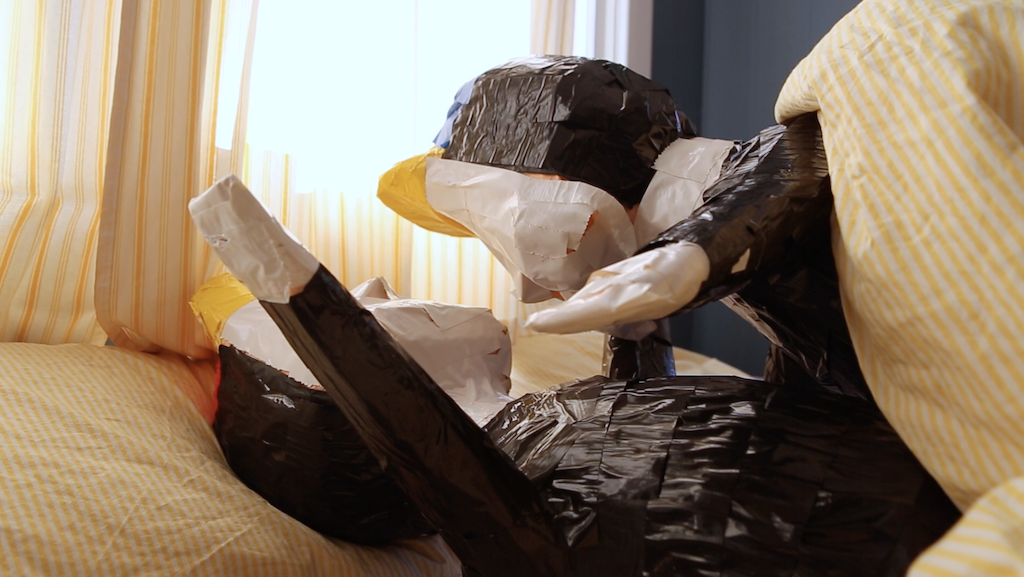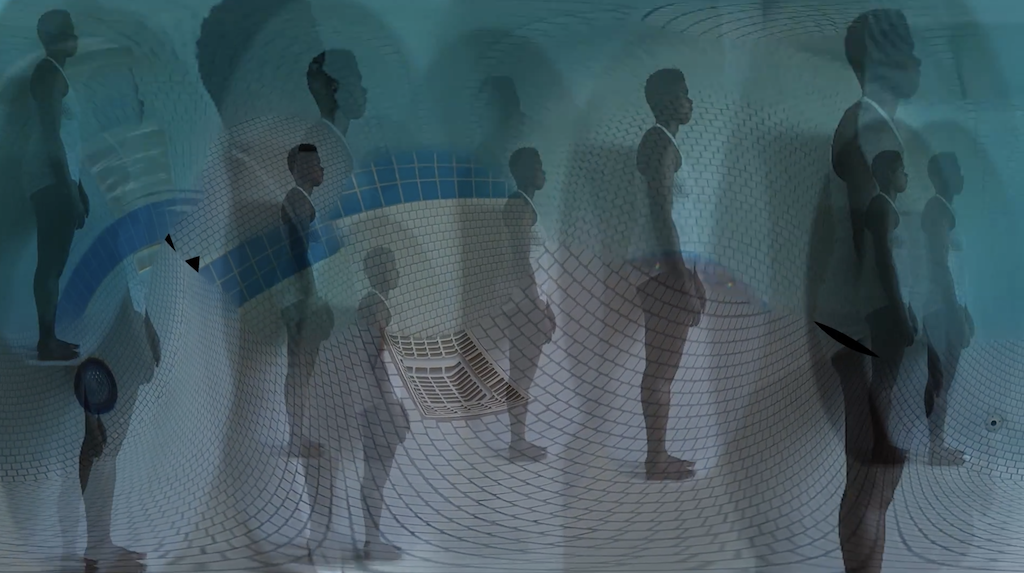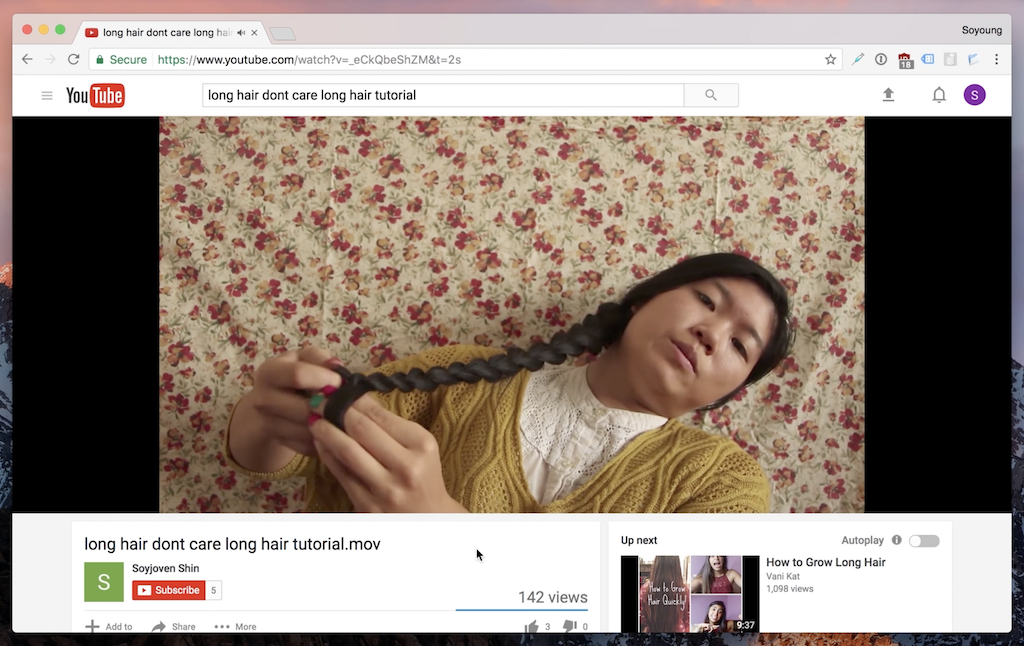Double-Double: Curated by Nateene Diu
June 3 - July 15, 2017
Opening Reception
Saturday, June 3
6 - 9 pm
Artists:
Christy Roberts Berkowitz
Rindon Johnson
John McGuire Olsen
Paul Pescador
Mitra Saboury
Soyoung Shin
PRESS RELEASE
How does one cope with assumed or assigned identity?
How does one exercise agency in the face of prescription or infringement?
How does one re-occupy both old and new versions of oneself?
AA|LA is pleased to present Double-Double, a group exhibition of works by Christy Roberts Berkowitz, Rindon Johnson, John McGuire Olsen, Paul Pescador, Mitra Saboury, and Soyoung Shin. The scope of the artworks includes oil paintings, VR, performance, video, installation, and human hair. Inspired by Jean Rouch’s 1955 docufiction, Les maîtres fous, the exhibition examines ideas of control, surrogacy, colonialism, and identity.
The artists delve into relationship(s) between their bodies and those of potential occupiers or interlopers. As a means of both self-defense and expulsion, each artist creates one or more surrogates in order to regain control. Some of these surrogate bodies serve as intermediaries between the artist and capitalist systems; some of them become stand-ins for past partners; some of them serve as a means for the artist to more deeply explore aspects of their own identity. And due to the range of roles that these locums play, they come in various forms: digital facsimiles, stuffed animals, hair extensions, buildings.
In Rindon Johnson’s My daughter Aaliyah (Norf, Norf), the artist multiplies their own body (which, while clothed, often passes as an African American male) many times over, creating a kaleidoscope of both partial and whole bodies. With each duplicate that Johnson makes, they take a piece of their oppressor with them. As the number of bodies grows, the more muddled the words of the oppressor become, reduced to nonsensical but still deafening noise.
Paul Pescador’s Crushes: Section B is one chapter of his feature length experimental film. In Section B, the artist explores a romantic relationship and its aftermath. Pescador creates vignettes in which the main character often uses inanimate objects as stand-ins for his partner to both comedic and heart-rending effect.
In Tucked, Mitra Saboury becomes the innards of a wall. Toes appear through an electrical outlet, from a space beyond a floral-papered wall that she presumably tucked herself into. She explores her environment this way, allowing disembodied digits to feel the air outside the wall. She identifies self as place here, becoming one with the wall, presenting the body as a current running through it, exploring issues of physical identity and continued conflation between female bodies and domestic structures.
John McGuire Olsen’s Perfect Information is a series of portraits that explores the ways in which people interact with the internet and mass media. The projection on each individual’s face quotes a cinematic visual trope: light from a control panel or computer monitor on a human face. Olsen has created what is at first glance a collection of individuals but what upon closer inspection is revealed to be a similar character again and again. By creating these facsimiles and presenting them together, the artist allows the viewer to feel the dangerous repetition that both splits and binds media consumers.
Soyoung Shin’s Crop is an interrogation of the cultural, racial, monetary, and erotic worth of women with 'good hair.' The artist’s ongoing ten-year project centers on the gradual creation of a surrogate: a wig. This first project phase is on display—her hair along with YouTube videos and email exchanges. It is only the first portion of the eventual proxy, yet even in its incomplete state, it already allows Shin to create and parse interactions.
In her social sculpture Some One, Christy Roberts Berkowitz experiments with how one might change within the framework of social media and daily digital exchanges with others. The artist considers how individuality might evolve when radical trust and openness meet purposeful incorporation of others, both friends and strangers. When an individual reclaims ownership of their online presence, how many different versions of self will they have created and what changes will they have enacted? When the profile returns to its original host, can one ever possibly be the same again?

